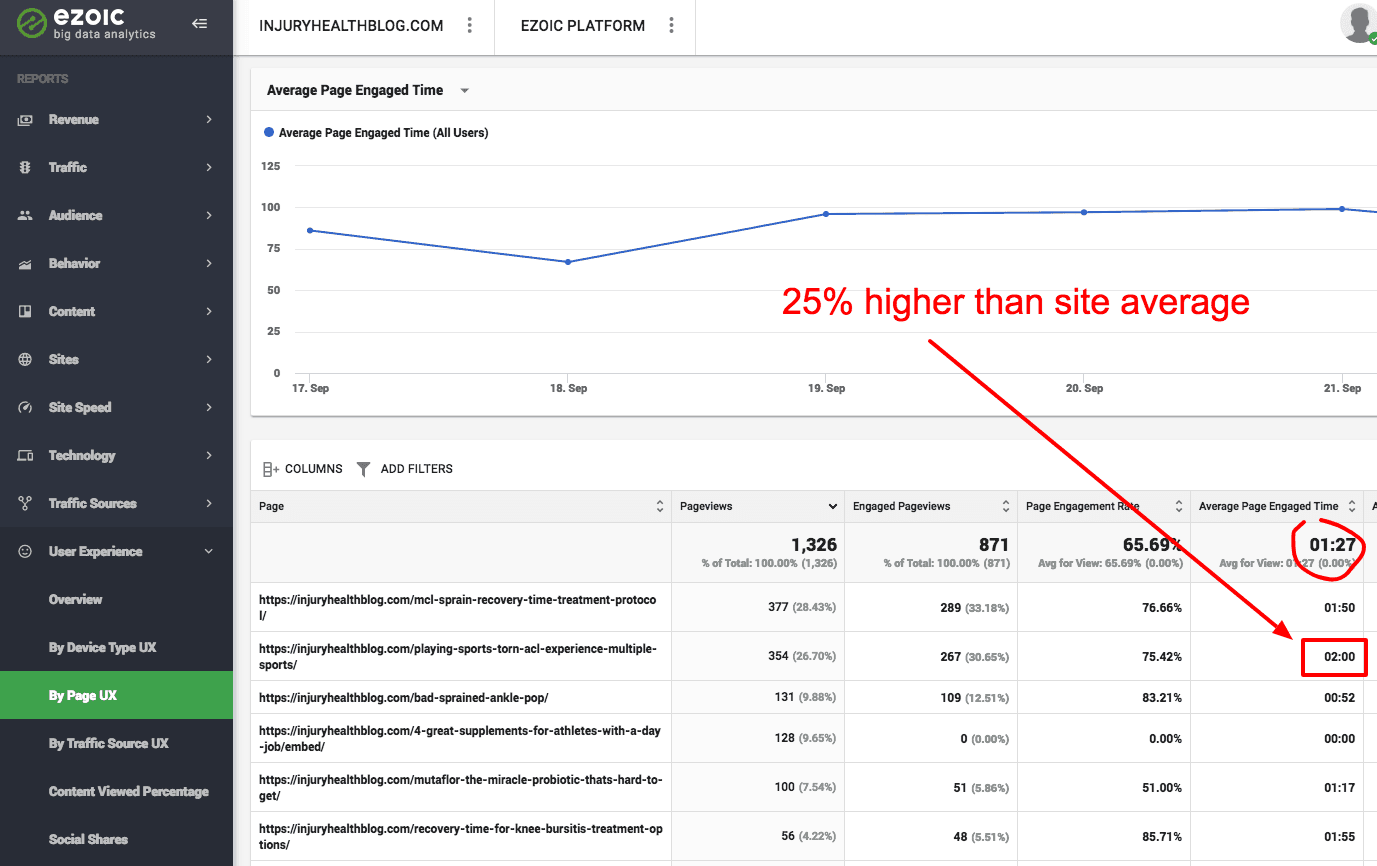When Do Higher Website RPMs Result In Lower Ad Revenue?
Higher website RPMs… lower ad revenue… that sounds impossible, right? If you read this blog a lot, this concept probably doesn’t seem like a surprise. We talk a lot about how the online advertising ecosystem works and how the math behind common practices can often be deceiving.
That said, higher RPMs are distinctive of higher page-level revenue. This can seem like something that is only good news if you’re a digital publisher, but the truth is that it is often causing long-term damage… or worse… lower revenue all the way around.
How can this be!? Below, I’ll show you how packing pages with ads can often be great for website RPMs but terrible for overall revenue and the long-term health of your website’s ad rates. I’ll share some real data from the thousands of sites we monitor and give you some real examples of sites that have been victims of ad-packing.
More ads, more money, right?
This is really the main point of this entire blog post. Ad density plays a really big role in ad revenue, but not in the way a lot of publishers might inherently think.
Let’s say a publisher has a small number of ads on a page…
If that publisher then uses a special tool/partner/ad network that measures all the pixels on their pages to place the maximum number of ads throughout the page — allowable by the various demand sources policies — it is extremely likely that page RPMs will increase exponentially.
For example, this site above (in the video) has used a partner that has used a partner’s plugin to place the maximum number of ads allowable according to Google policy (as many of the ads on the page are from Google demand sources).
This is a will almost always increase the revenue of a single page in the short-term.
Unfortunately, as you can tell in the example, that is a lot of ads. Trying to maximize ad revenue in that way can cause two unintended consequences.
Both stem from the visitors finding the experience disruptive, slow, or annoying. And then…
1.) They end their session early — resulting in fewer pages visited and lower overall revenue from their entire visit (more pages, means more ads shown over the long term)
2.) They are less engaged and spend less time on the page — this results in advertisers bidding lower for ads on that page over time
Can maxing out ads on a page actually damages overall website revenue?
Maybe.
It depends on what you mean by maxing out ads on a page.
There are policy requirements from ad demand provides, like Google, that limit the number of ads on a page. Maxing out this number doesn’t — by itself — mean that ad revenue will be damaged for a publisher.
However, what publishers should really be worried about is maxing out the visitor’s threshold for ad density.
How many ads can you show a user on a page before you disrupt or harm their experience?
If a visitor ends their session earlier than they normally would, you will miss out on the revenue from any pages they may have subsequently visited. While a publisher’s RPMs may be higher from all those ads on a single page, overall revenue will likely be lower since the visitor left the entire site earlier than expected.
What’s more…
If the visitor’s engagement time drops, advertisers will likely start to bid less for ads on that page over time.
This means that you may have higher RPMs for a short period of time, but see the RPMs slowly deteriorate over the next 6-12 months as user spend less time on those pages.
This is why we’ve been able to do experiments that have shown that removing ads actually can help increase overall revenue.
How do you find the right balance of ads and revenue?
There are really two ways to think of this challenge. There is a simple solution and a complex one.
The simple solution starts by looking at the heart of the problem.
Optimizing for higher website RPMs will almost always result in loading pages up with ads.
Pages filled with ads will often have higher website RPMs — especially initially.
However, as stated above, this can lead to lower overall revenue per visitor.
Start looking at revenue in terms of EPMV (or ad session RPM) instead of RPMs.
Publishers seeking higher website RPMs should actually be seeking higher EPMVs (total revenue per visit).
EPMV equation: Total Earnings divided by (Visitors / 1,000)
So, in short, ignore RPMs and instead see how EPMV is trending as you make changes to your website’s ads.
The more complex solution forces publishers to better understand user experiences.
Ultimately, the best way to maximize revenue is to find the balance of the most amount of revenue you can make from ads without having them disrupt the user’s experiences.
Honestly, this is a lot easier said than done.
We’ve learned over time that objective metrics like bounce rates, average pageviews per visit, and session duration (time on site) offer a lot of help in determining how much different ad treatments affect visitor experiences.
However, there are some deeper metrics that actually provide a more granular view of the user’s experience. Markers like engagement time and navigation bounces provide a better view of visitor intent.
We’ve found that these metrics have a lot closer correlation to long-term ad rates and website ad earnings.
You can find ways to track them in tools like Google Analytics, but they are calculated and displayed for you in Ezoic’s Big Data Analytics.
Ad density is best decided at the visitor level
Trying to figure out how many ads you should put on a page is not a fun problem to solve.
6 ads may be just fine for one visitor, but way too many for another.
Most publishers seek to find balance; however, the best solution is to alter ad density based on user behavior.
This is something I’ve talked about before in relation to layouts and ad positions.

Ultimately, you don’t want to be making these decisions at the page-level. Determining how many ads to put on the page robs you of a big chunk of important data that can help you increase ad rates over time and maximize total revenue per visit.
You want to see how users respond to the ads. Website RPMs are just measuring page-revenue and ignore the fact that users may bounce if they see too many ads.
EPMV is a much safer metric to optimize towards.
What should publishers do to increase ad revenue?
Focus on small changes that improve user experiences.
Test ad combinations and segment audiences. See how different traffic sources and device-types affect how a visitor may interact with the ads on your site.
Apply these learnings by setting up rules on your site that display different ad combinations to different types of visitors.
This will help you truly maximize revenue over the course of a session while maximizing engagement and increasing ad rates on your site over time.
Not sure how to do that? Ezoic allows you to set it up and do it automatically.

Outside of ads…
You can increase ad rates by making your content more engaging.
See what pages on your site have the longest engagement time and then see if you can apply the features of those pages to other pages (do they include videos, longer form content, etc.).
Increasing engagement time will help you improve the long-term earning potential of your website.
Wrapping it all up
Want higher website RPMs? No you don’t.
Most publishers want higher ad revenue and better experiences for their visitors. Optimizing RPMs won’t directly do either of these things.
Focus on improving experiences for every kind of visitor and look at ad density in the context of the visitor’s entire user session.
Thoughts, questions?
Leave them below.



